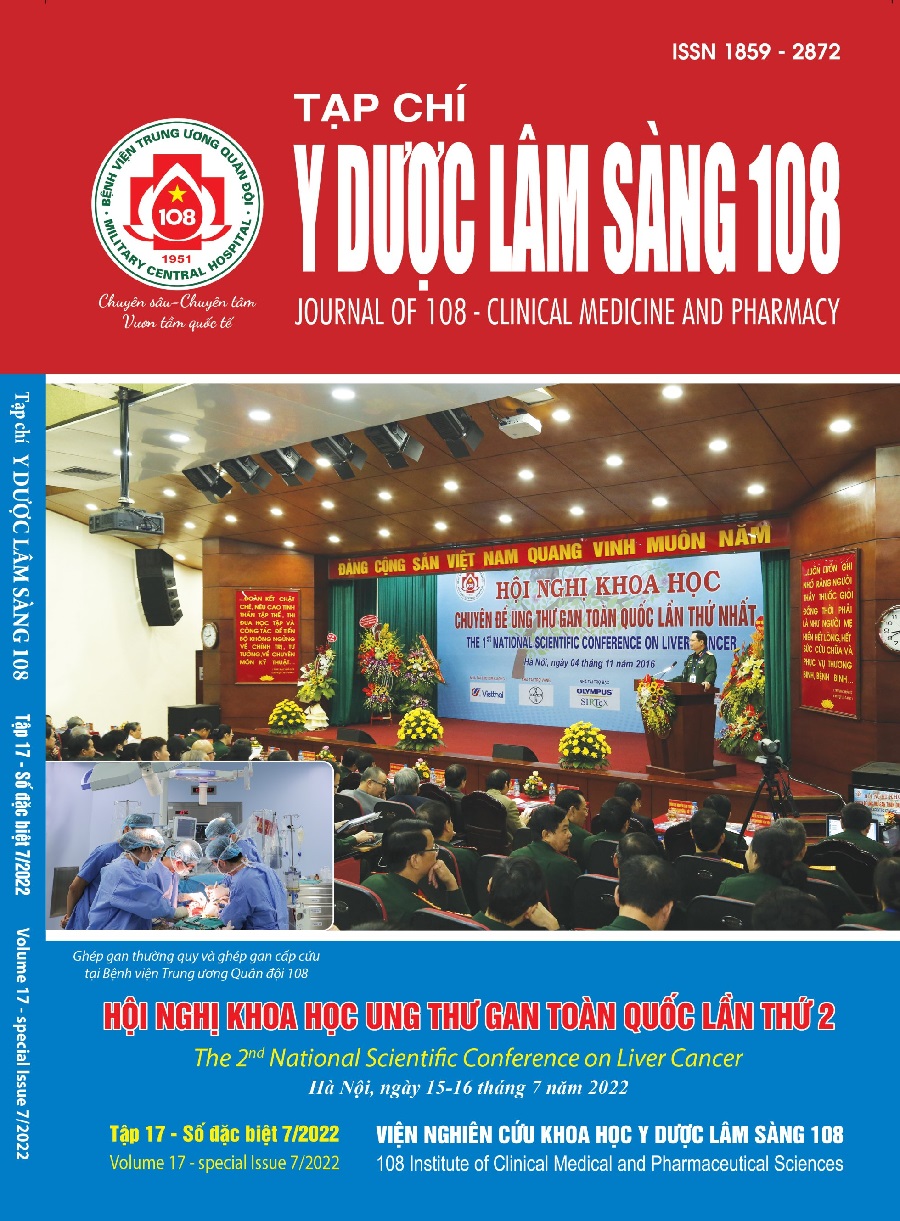An update on the histological subtypes of hepatocellular carcinoma
Main Article Content
Keywords
Abstract
Hepatocellular carcinoma (HCC) is the sixth most common cancer in the world and South-East Asia nations. HCC related to the pathogenesis of hepatitis B, hepatitis C, both alcoholic and non-alcoholic steatohepatitis (continuing to increase due to the rise of obesity and diabetes rate). Although, there are lot of progresses, however, tumor recurrence, distant metastasis and chemotherapy resistance remain mainly barrier in treatment of HCC. The advances in gene mutation research, molecular targeted therapy is developing as a new hope for better disease control. Histologic classification of tumors according to World Heath Organization has been widely applied and practiced worldwide. The fifth modified and supplemented classification for primary tumors in liver was given histological subtypes of HCC that related to molecular characteristics. Further understanding on subtypes of HCC such as macrotrabecular massive HCC, fibrolamellar HCC, lympho rich HCC... accompaning with molecular changes of the primary liver tumor will bring value for prognosis and contribute to better HCC management.
Article Details
References
2. Nagtegaal ID, Odze RD, Klimstra D, Paradis V, Rugge M, Schirmacher P, Washington KM, Carneiro F, Cree IA; WHO Classification of Tumours Editorial Board (2019) The 2019 WHO classification of tumours of the digestive system. Histopathology 76(2):182-188. doi: 10.1111/his.13975.
3. Bosman TF, Carneiro F, Hruban RH (2010) WHO classification of tumours of the digestive system. 4th ed. Geneva: International agency for Research on Cancer.
4. Roncalli M, Park YN, Di Tommaso L (2010) Histopathological classification of hepatocellular carcinoma. Dig Liver Dis 42(3): 228-234.
5 Honeyman JN, Simon EP, Robine N et al (2014) Detection of a recurrent DNAJB1-PRKACA chimeric transcript in fibrolamellar hepatocellular carcinoma. Science 343: 1010-1014.
6. Kastenhuber ER, Lalazar G, Houlihan SL et al (2017) DNAJB1-PRKACA fusion kinase interacts with beta-catenin and the liver regenerative response to drive fibrolamellar hepatocellular carcinoma. Proc Natl Acad Sci USA 114: 3076-3084.
7. Salomao M, Yu WM, Brown Jr RS et al (2010) Steato-hepatitic hepatocellular carcinoma (SH-HCC): A distinctive histological variant of HCC in hepatitis C virus-related cirrhosis with associated NAFLD/NASH. Am J Surg Pathol 34: 1630-1636.
8. Lee JS, Yoo JE, Kim H et al (2012) Tumor stroma with senescence-associated secretory phenotype in steatohepatitic hepatocellular carcinoma. PLoS One, 12 e0171922.
9. Seok JY, Na DC, Woo HG et al (2012) A fibrous stromal component in hepatocellular carcinoma reveals a cholangiocarcinoma-like gene expression trait and epithelial-mesenchymal transition. Hepatology 55: 1776-1786.
10. Matsuura S, Aishima S, Taguchi K et al (2005) ‘Scirrhous’ type hepatocellular carcinomas: A special reference to expression of cytokeratin 7 and hepatocyte paraffin 1. Histopathology 47(4): 382-390. doi: 10.1111/j.1365-2559.2005.02230.x.
11. Chan AW, Tong JH, Pan Y et al (2015). Lymphoepithelioma-like hepatocellular carcinoma: An uncommon variant of hepatocellular carcinoma with favorable outcome. Am J Surg Pathol 39: 304-312.
12. Park HS, Jang KY, Kim YK et al (2009) Hepato-cellular carcinoma with massive lymphoid infiltration: A regressing phenomenon? Pathol Res Pract 205: 648-652.
13. Harding JJ, Nandakumar S, Armenia J et al (2019) Prospective genotyping of hepatocellular carcinoma: Clinical implications of next-generation sequencing for matching patients to targeted and immune therapies. Clin Cancer Res 25: 2116-2126.
14. Calderaro J, Meunier L, Nguyen CT et al (2019) ESM1 as a marker of macrotrabecular-massive hepatocellular carcinoma. Clin Cancer Res 25: 5859-5865.
15. Calderaro J, Couchy G, Imbeaud S et al (2017) Histological subtypes of hepatocellular carcinoma are related to gene mutations and molecular tumour classification. J Hepatol 67: 727-738.
 ISSN: 1859 - 2872
ISSN: 1859 - 2872
